
In 2023, retail sales online reached $6.3 trillion, and it’s projected to surpass eight trillion by 2026. The shift of buying goods and services into the digital sphere is increasingly evident, intensifying competition in this space.
Retailers are now inventing new approaches, leveraging VR, AR, and other technologies for marketing purposes. They’re also adapting existing tools (SEO, Push notifications, SMS, etc.) to maintain visibility to customers. Thus, as e-commerce expands, so does internet marketing, encompassing various channels and promotional strategies.
In the article, we’ll delve into what e-commerce marketing entails, the tools it employs, and successful promotional strategies.
What is E-commerce Marketing
Firstly, let’s clarify what electronic commerce involves.
E-commerce, or electronic commerce, refers to conducting business through online channels, which serve as the primary means of customer attraction and communication. It typically involves the online sale of goods and services.
The e-commerce market grows annually, largely supported by promotional channels. Digital marketing has long been a vital component of e-commerce. It’s challenging to imagine an online store without email campaigns, advertisements, and other means that enhance product visibility.
E-commerce marketing encompasses digital methods and practices used to promote a business’s goods and services online, aiming to boost sales. For e-commerce, marketers enhance brand recognition and highlight specific products to capture user attention. The tools of digital marketing vary based on the goals and objectives of the online business.
E-commerce marketing tools
Internet marketing technologies evolve rapidly, but some core tools remain constant.
Website and SEO
To establish an online presence, an e-commerce platform is essential — a software enabling the creation of an online store and the execution of transactions (payment, order processing). A user-friendly and properly functioning website or landing page is the foundation of e-commerce.
However, to gain visibility for your business, promoting the website is crucial. One effective method is SEO optimization. It’s a technique that elevates your website’s ranking in search engine results through keywords, page speed enhancements, and various strategies.
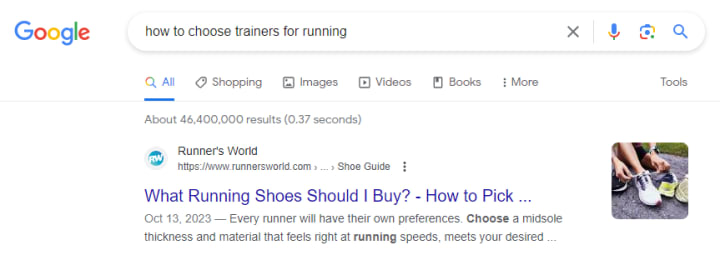
Advertising
Digital marketing in the online world encompasses various types of advertising chosen by businesses based on their objectives.
1. Contextual
Advertisements appear in search engine results based on user queries and include specific keywords.

2. Targeted
Advertising messages are tailored to a specific audience (usually on social media) sharing certain characteristics. Unlike contextual advertising, targeting doesn’t precisely know if a user needs the product or service, but it “guesses” their preferences and presents the relevant offer. Retargeting is a distinct form of targeted advertising, where users are shown products they previously viewed.

3. Banner
These are pop-up or static banners on websites.

4. Native
Embedded advertising within content that resembles recommendations and seamlessly fits into the material’s context.
5. Video advertising
Clips shown before, during, or after main videos (trailers, informative content, etc.).

SMM
It’s hard to imagine digital marketing without the support of social media, which sometimes become independent platforms for e-commerce. Companies use their social media pages to showcase products, create posts about their services, and engage with followers.
Social media platforms even offer their own sales tools, such as product cards on VK, for instance.

Email newsletter
The email marketing channel remains relevant and continues to be a crucial tool for internet marketing strategies. Emails are used to inform customers about new arrivals, promotions, order confirmations, payments, and delivery updates. In some cases, they also remind ‘forgetful’ customers who left items in their carts but did not complete the purchase. Email remains a familiar and preferred means of communication with brands for many.

Push notifications
Internet marketing and e-commerce have long embraced push notifications — short messages that pop up on a smartphone screen. Their functions often mirror email, informing users about promotions, new products, or delivery statuses. The advantage of push notifications is their higher likelihood of being seen compared to an email in one’s inbox.
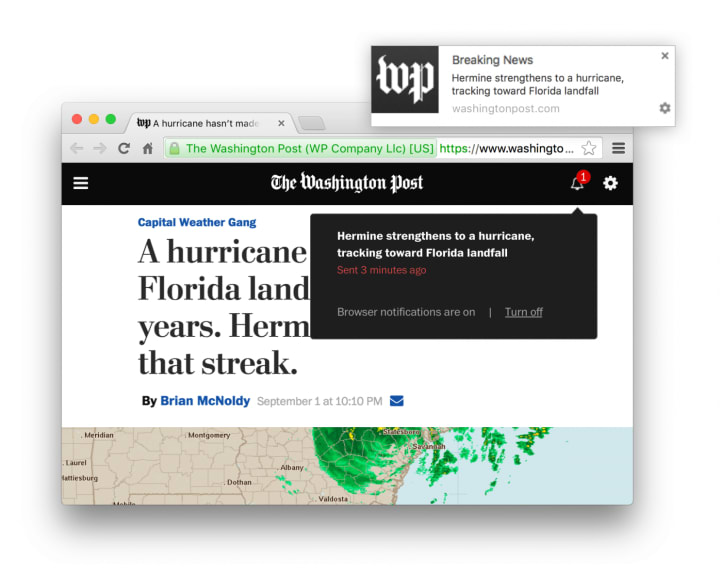
SMS
Though digital marketing leverages new tools, SMS messages continue to be utilized. Their main advantage lies in their high delivery rates to recipients. While a user might not always see an email on the same day, or push notifications might be turned off, SMS messages boast an open rate of up to 98%. Text messages can be received without internet access, just by being connected to the network. Although they lack multimedia elements like photos or videos, SMS ensures precise delivery of information. The downside of SMS is its cost, but that doesn’t deter e-commerce from choosing this promotional channel.

Messengers
Communication via messaging apps has taken the world by storm. Hence, e-commerce also leverages this tool, aiming to cover all communication channels.
Messaging apps have become one of the touchpoints where customers engage with online store managers.
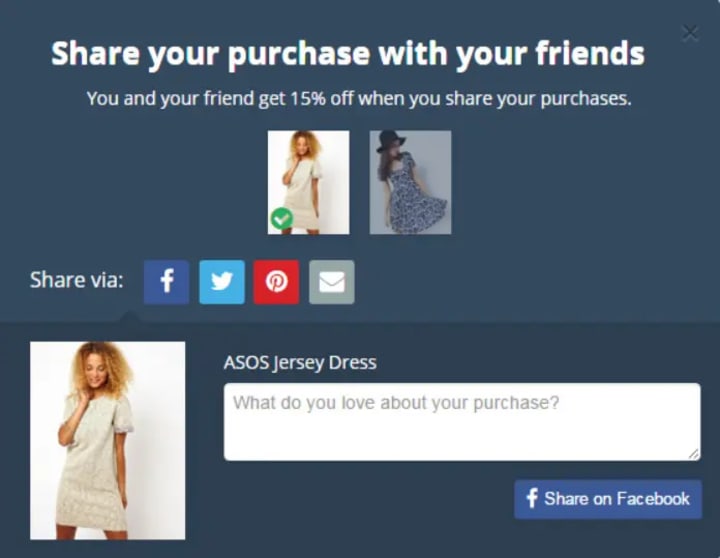
They also serve to promote products on websites. For instance, within the WhatsApp Business* features, there’s an option to create product catalogs.
Telegram channels have become a distinct channel for content distribution, capable of functioning as a company blog.
Content
Content marketing is an alternative to direct advertising. Through sharing useful, engaging, and entertaining content, trust and connections with the audience are formed. This approach to internet marketing doesn’t pressure the user; instead, it gradually introduces them to the company’s products and explains how to use them.
Content is published in various formats: articles in corporate blogs, posts on social media, videos on YouTube, podcasts, and more.

AR/VR technologies in e-commerce
Internet marketing and e-commerce are swiftly adapting to high-tech advancements, integrating them into their promotional strategies. Through augmented and virtual reality applications, customers can virtually try on clothing or visualize furniture within the actual interior of their homes. Products with 3D visualizations are already surfacing in Google search results.

Strategies for digital marketing in e-commerce
Strategies for digital marketing in e-commerce vary based on business goals and capabilities. Here are examples of some methods used by marketers, individually or in combination:
Working on the website
It’s a misconception that merely creating a website will autonomously generate revenue. For e-commerce, the website needs constant improvement for user convenience and search engine optimization.
To ensure successful indexing by search engines:
- Develop content that addresses user queries rather than solely focusing on keywords. Search engines are smarter, so deceiving them with phrases like “buy cheap sofa” in a text about cucumber planting won’t work. Factors like time spent on pages and bounce rate (the number of users leaving the site) are considered.
- Improve loading speed and site usability. Users won’t wait for heavy images or animations to load. If they can’t quickly understand how to place an order, they’ll likely move to competitors.
- Adapt the site for mobile devices. Prioritize user convenience — the easier it is to order from a smartphone, the higher the chance of conversion. In 2023, having a site not optimized for smartphones is odd.
SEO is a long-term strategy that brings relevant leads. However, continually optimizing your web resources is essential; otherwise, you’ll be overtaken by others.
Content marketing
Content marketing is another long-term strategy essential for building trust with customers, increasing loyalty, and explaining how to use your products.
Content marketing is also intertwined with SEO because articles can incorporate user queries and keywords. Engaging content encourages readers to stay on the page longer, boosting its performance.
Additionally, content marketing includes publications on external platforms — partner blogs, specialized sites, social media, podcast platforms, and YouTube.
Мultichannel marketing
Мultichannel marketing involves synchronizing communication with customers across various channels. This means that data from emails, push notifications, SMS, messaging apps, and other sources are collected into a unified platform. For instance, if a user initiates contact with a company via email and later reaches out about the same order via a messaging app, a well-integrated multichannel approach merges these two interactions into a single record, avoiding duplicates and inaccurate data.
Multichannel marketing is crucial for personalizing interactions with e-commerce customers. By tracking every step and order of a customer’s journey, a company can analyze this information and curate product recommendations or offer tailored incentives. This approach boosts loyalty and encourages repeat purchases. Centralizing and managing this data is often facilitated by a CDP.
Social media
Social media is a straightforward way to reach an audience, analyze their interests, and needs. It’s also an effective platform to seamlessly present your product. Some brands gain popularity primarily through their social media presence. For instance, the clothing brand IRNBY became known due to its founder Anastasia Mironova. She started as a fitness blogger, amassing over a million followers, later venturing into sportswear, and now designs clothing for everyday life.


Currently, the IRNBY brand has over 300,000 followers, and this account attracts attention not only because of the personal brand of its founder. It showcases stylish and unconventional photoshoots, often featuring atypical models.
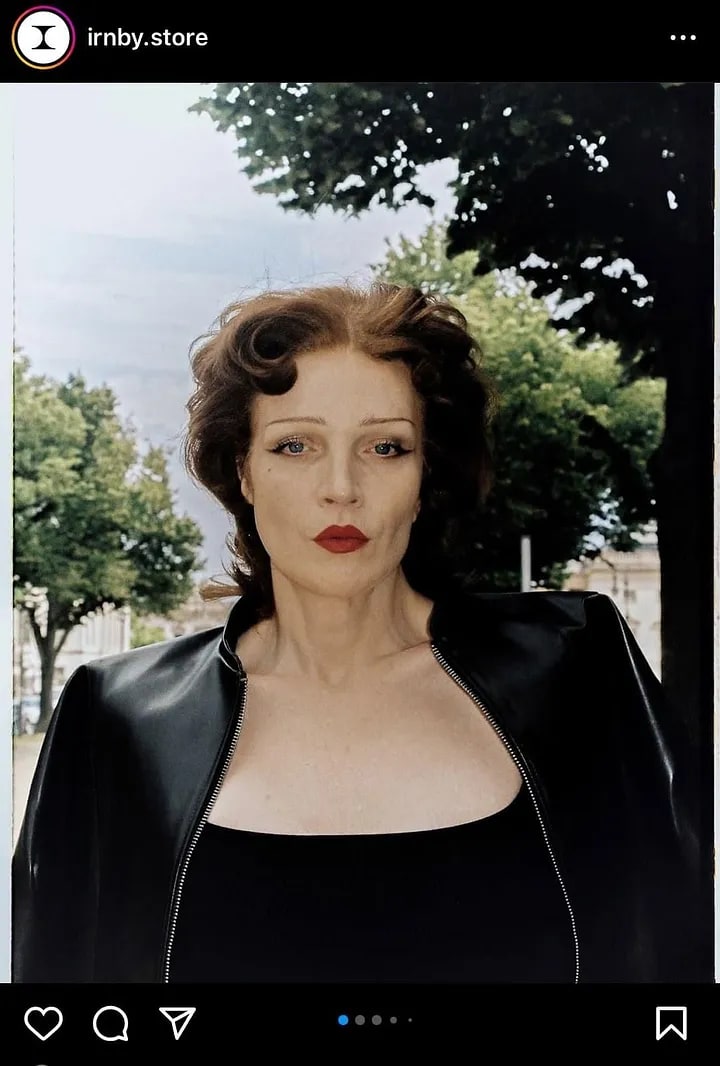

This case also falls under influencer marketing, where promotion occurs through a well-known personality. For instance, Reese Witherspoon was an ambassador for the beauty brand Avon and frequently appeared in the brand’s advertising campaigns and catalogs.

Personalized offers
Offering customers exactly what they want increases the chances of a purchase. E-commerce companies create individual product selections based on user data to showcase items that might appeal to them.

Online streaming platforms excel in creating selections based on user interests, assessing previously watched movies and series. This engagement often retains subscribers for the following month or encourages them to upgrade their subscription for expanded content access.

The PPC method
The Pay-Per-Click (PPC) advertising campaign is a time-tested promotion method where an ad is placed on a specific platform (website). Conducting such a marketing campaign is cost-effective since payment is made solely for the number of clicks it receives, directing users to the advertiser’s site. This type of advertising is tailored according to users’ search queries.
This method swiftly generates traffic and enhances the visibility of a company’s products. Creating PPC campaigns requires a thorough understanding of the audience and the correct selection of keywords.
Promotion through users
The first method is leveraging customer reviews from satisfied buyers. When ordering products online, the opinions of other buyers play a significant role, with 90% of people reading reviews before making an online purchase. Hence, brands encourage users to leave their feedback.
The second method of promotion is through referral programs, also known as “refer a friend.” An individual recommends an e-commerce business’s product or service to someone they know. When the referred person makes a purchase, the existing customer receives a bonus, such as a discount, special terms, a gift, and so forth.
Five examples of automated email chains for e-commerce
Order tracking
Keep the customer informed about changes in the order status until its receipt after the purchase is made.
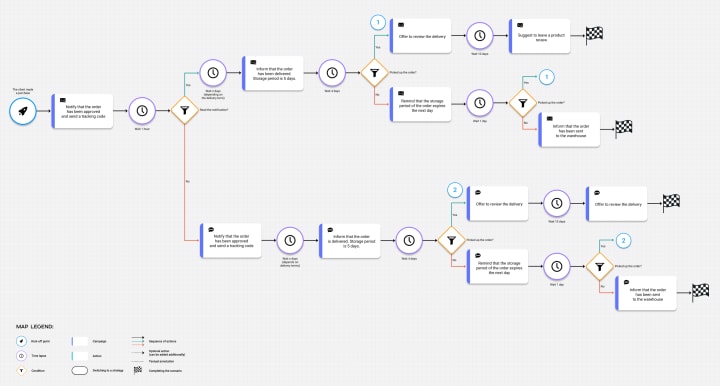
Reminder about “Favorites” items
Often, people mark items as “Favorites” but forget about them. Remind the customer about the things they’ve saved for later but haven’t purchased yet.

Increasing abandoned cart efficiency
Another example of customers forgetting is when they add items to their cart but don’t complete the purchase. The reasons can vary: the person got distracted and forgot, didn’t add a payment method and postponed the purchase, or didn’t have enough funds on the card, and so on. Remind the customer about the abandoned items via email. For regular customers, you can motivate them to make the purchase by offering a pleasant promo code available only for the items in their cart.

Personalized offers in the user account
Provide the customer with the opportunity to feel special. When they log into their account, show them a banner with a personalized offer.

Store anniversary
A great opportunity to thank customers for staying with us. Prepare an exciting contest or prize draw to enhance their loyalty and trust in the brand.

Summary
E-commerce internet marketing encompasses a variety of online tools and methods that promote products and services for companies primarily operating through the internet. The primary goal is purchasing, achieved through various strategies: SEO optimization and website usability enhancements, content marketing, omnichannel approaches, social media management, PPC campaigns, personalized offerings, and others.
E-commerce marketing employs a diverse range of promotion tools: email, push notifications, SMM, messenger platforms, online advertising (targeted, contextual, and others), SEO, augmented and virtual reality solutions.
Strategies and tools are tailored individually by each company, depending on their goals and resources.
*Product of Meta, recognized as an extremist organization in Russia.
The article was originally published here.
About the Creator
Altcraft
Interesting and useful articles about marketing, our product and online communications






Comments
There are no comments for this story
Be the first to respond and start the conversation.